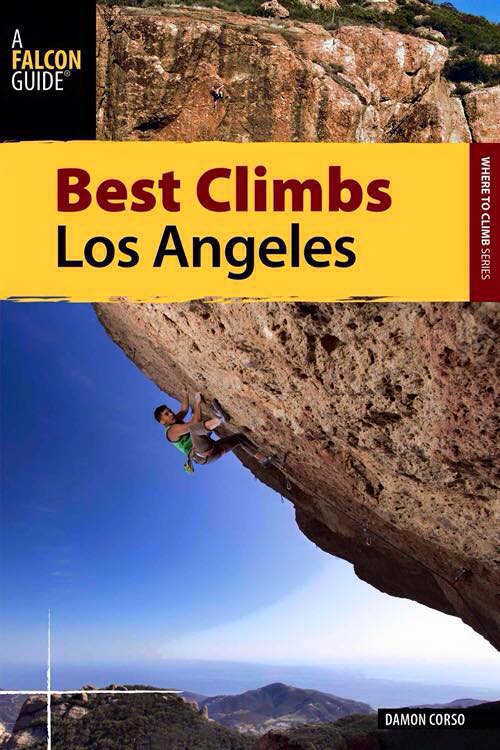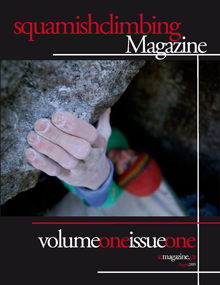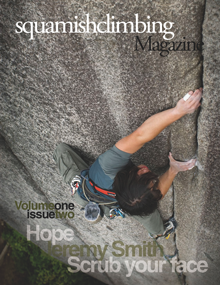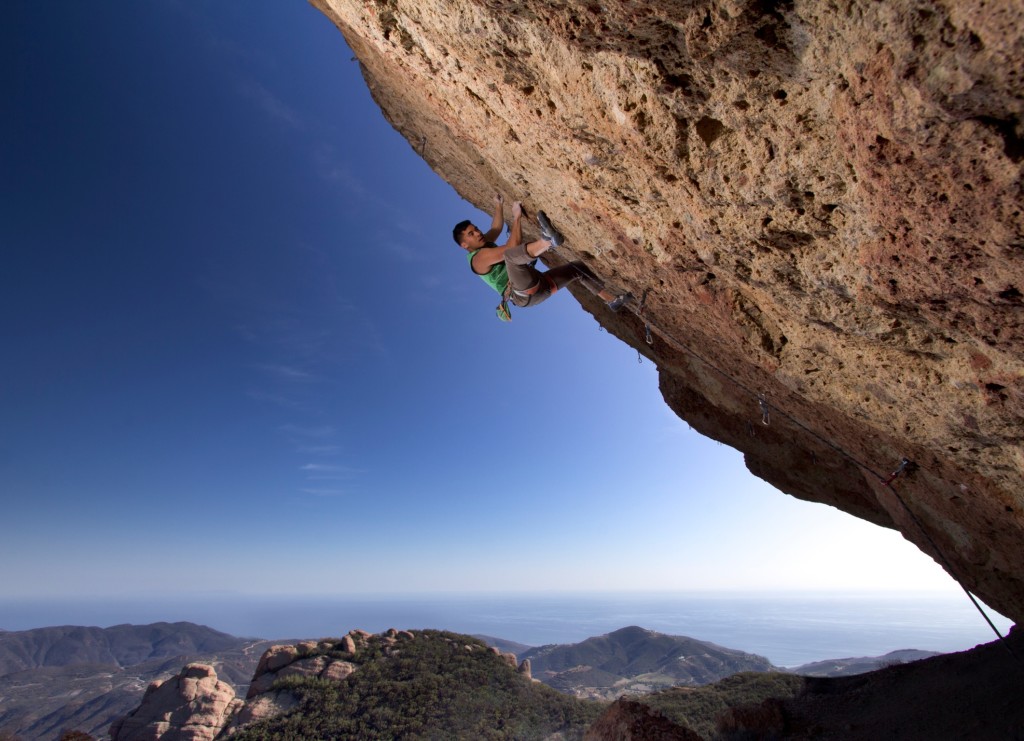
Isamer Bilog climbing high above the Pacific Coastline on ‘Piledriver’ (5.12b) at Boney Bluff. Photo courtesy of Damon Corso ©
Years ago I didn’t know where to go for spring break so I joined my friend Pat Nosil on a research expedition in the Los Angeles Basin. At the time, Pat was studying stick bugs out of his van and knew all the best spots for climbing and picking bugs. As we drove across Los Angeles, it soon became apparent that deep in the hills outside of the city’s reach, there were a number of great climbing areas. These areas have remained lost for years, only known to those who have gone out of their way to find them. Without a guidebook, these areas have gone under the radar, until now.
I first met Damon Corso in Magic Woods. He was there with a small crew of Californians and we immediately became friends. As a professional photography, Damon has always had a knack for finding hidden gems. He is one of the few that knows Black Mountain like the back of his hand and has now put in a ton of effort documenting the best climbing spots in the Los Angeles Basin. Squamish Climbing Magazine thought it best to check in with the man himself and see what he has found.
Hi Damon, How is it going?
Things are good my friend! My new guidebook ‘Best Climbs Los Angeles’ just got released from Falcon Guides and I’m currently working on my next project, ‘Best Climbs Santa Barbara and Ventura’.
How did you come up with the idea for the book?
I was at the outdoor retailer trade show in Utah in the winter 2013 and I met some of the people that work at Falcon Guides that day. I actually approached them to get their opinion on a guidebook. I personally wanted to make ‘Backcountry Bouldering in the High Sierras of California’. I knew my idea was too small market for them but I wanted to get some insight because they are the guidebook authority across the globe. After talking with them for a while, we realized I would be the perfect candidate to do a ‘Best of Los Angeles’ climbing guidebook and they gave me an offer right then and there. I knew I was going to say yes, but being a good businessman I told them I needed the night to think about it.

Isamer Bilog finds the last warmth of the sun on a rare snow day in Los Angeles on ‘Loose Nut’ (5.10d) at Spring Crag. Photo courtesy of Damon Corso ©
What is unique about the LA climbing area as opposed to a more well known area such as Joshua Tree or Bishop?
What sets the rock climbing apart in Los Angeles from the rest of the world is simply that it’s in Los Angeles. People ask me this often, how I can make a guidebook for Los Angeles when there are so many other better places? But it was easy for me, I spent the last year and a half looking at Los Angeles as my only climbing options, very similar to when I began climbing 11 years ago when I moved to Los Angeles. With this mindset, you quickly learn that within Los Angeles county there is some really really good rock climbing. Los Angeles has volcanic rock in really deep canyons right next to a beautiful river, long sustained sport routes deep in a hidden valley way in the malibu backcountry, perfect granite bouldering in an alpine setting only an hour away from downtown Los Angeles, the list goes on and on. We really do have a little bit of everything.
Does the book include routes and bouldering areas?
I wanted to make the book have something for everybody, I made sure to include lots of beginner routes, such as easy top ropes, simple lead climbs and v0 boulder problems. I also wanted to include some of the traditional climbing that Los Angeles has to offer, it’s not a lot but it’s on really good granite in an alpine setting. I also made sure to have a good selection of moderate and more difficult sport climbs. And of course, I had to include the two most famous bouldering areas in Los Angeles, Stony Point and Horse Flats.
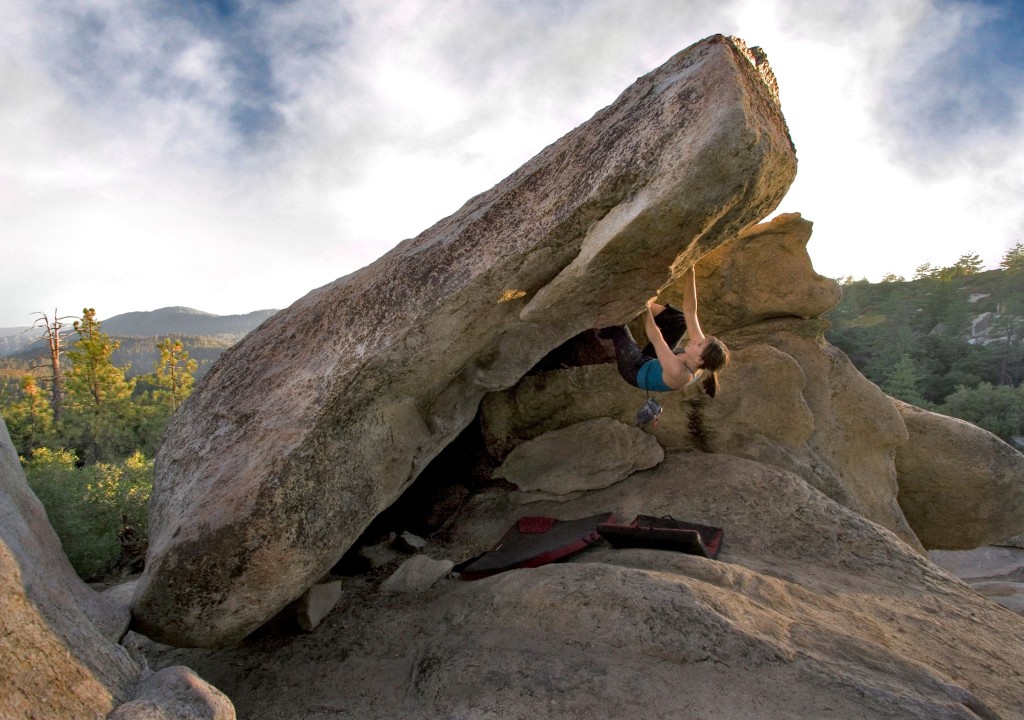
Natasha Barnes taking a sunset cruise on ‘The Fang’ (v3) at Horse Flats. Photo courtesy of Damon Corso ©
Are any of the crags in urban areas?
The most urban area in the book would have to be Stony Point. Stony Point was the first real bouldering area in the country, some of rock climbing’s heroes such as Royal Robbins, Yvon Chouinard, and John Bachar cut their teeth at stony point before moving on to bigger and better climbing areas. Stony point is in the middle of the valley in Chatsworth, it’s right off the highway and next to a real busy road. It gets lots of day hikers and young kids partying, this makes it a very urban setting, lots of graffiti, but when you get into it and find hidden spots, where the Bouldering and the top roping is, it really is a special gem for Los Angeles
Any standout routes people should know about?
Some of the sport routes that are must do’s if you are visiting Los Angeles are:
Malibu Creek State Park
Chopping Block 5.8, Gorgeous 5.10a, The Drifter 5.12a
Echo Cliffs: Game Boy 5.9, Espresso 5.11a
Point Dume: The Arete 5.6 (you literally climb next to the ocean where you can whale and dolphin watch!)
Spring Crag: Loose Nut 5.10d (alpine granite at 7,000 ft an hour from downtown LA)
And some of the boulder problems you must make sure to do when in Los Angeles are:
Stoney Point
Three Pigs v1 (one of Rock and Ice Magazines top 100 climbs), Crowd Pleaser (aka Yabo Roof) v2, Kodas Corner v3, Crystal Ball Mantle v5
Horse Flats: Thin Crack v0, Bow Sprits v2, B1 Face, The Yardarm v3, Dragon Flake v5.
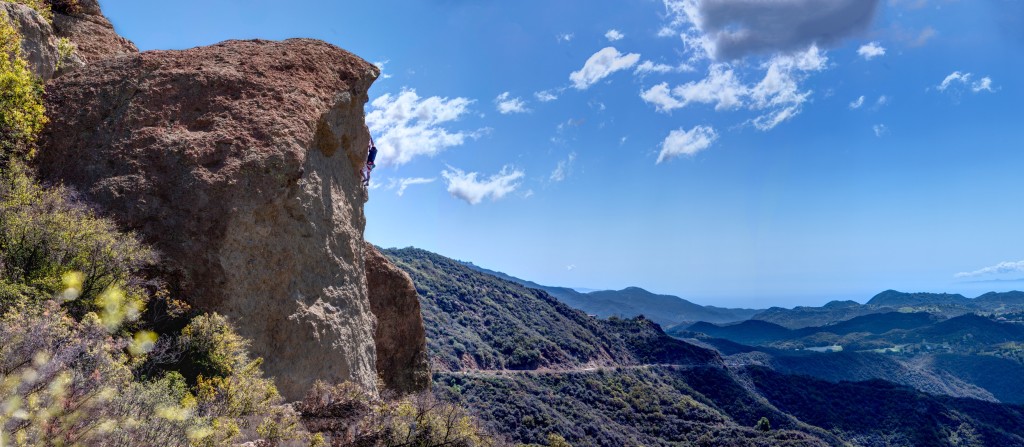
The Santa Monica Mountains are riddled with spectacular views; Victor Ramirez finds one while climbing ‘Incognito’ (5.11b) at The Lookout. Photo courtesy of Damon Corso ©
What was it like taking on such a large geographical area?
It was real intimidating at first, I spent weeks looking at local maps, guidebooks and detailed topographical maps, trying to figure out what areas to include and how far away from the heart of Los Angeles I wanted this book to cover. I had a lot of areas in my master outline when I began, but as I began to really investigate each area I discovered that some of the smaller satellite areas just were not five stars. This made it easier for me to chop out a lot of little areas that just weren’t worth the time to put in the book. I really want people to have the best time possible if you’re going to climb the routes in my book. Otherwise, Los Angeles was easily broken down into three main areas, Angeles Crest National Forest, the Santa Monica Mountains, and the Pacific coastline.
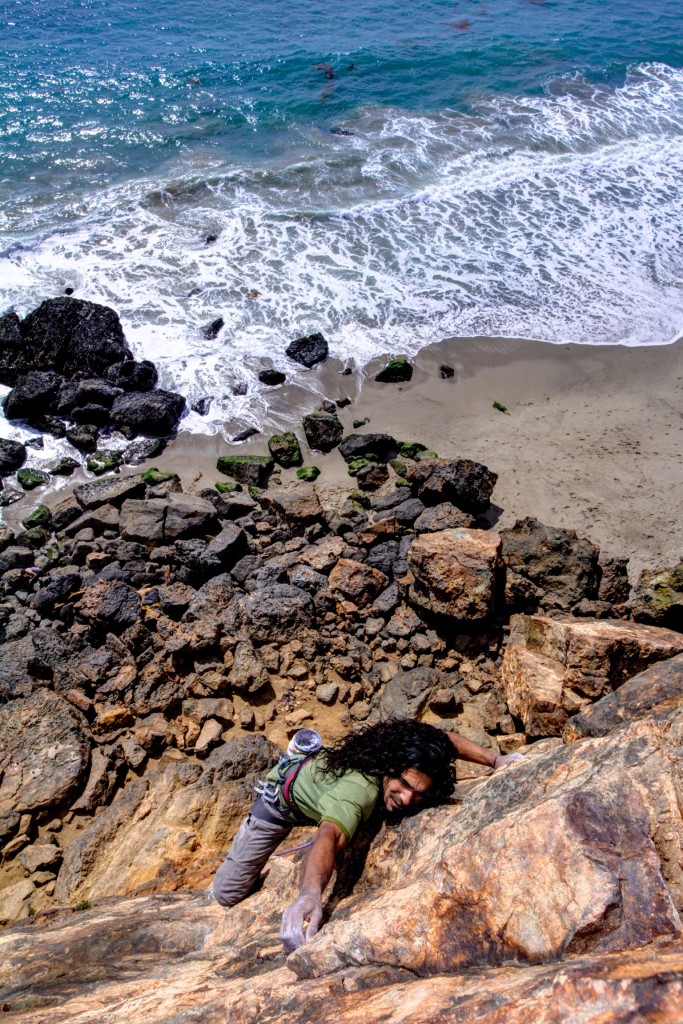
Norman Montes gets a heavy dose of nature at its finest on ‘West Face Right’ (5.10b) at the cliff of Point Dume. Photo courtesy of Damon Corso ©
Can you give us a small synopsis of the history of climbing in LA?
Here are some notable bits of history from some of the more popular areas.
Stoney Point: Royal Robbins hopped freight trains as a teen in Los Angeles. As he passed by Stoney Point Park one day in the Valley, he had to hop off to see what all these rocks were like and he had found his playground. Luminaries such as Yvon Chouinard, John Bachar, John Long, Lynn Hill, Michael Reardon and John Yablonski all called Stoney Point home at one stage of their careers.
Malibu Creek: Malibu Creek used to be home to the exclusive ‘Crags Club Lodge’ where wealthy families came to experience wilderness in an upscale manner. Soon after the Lodge’s closure in the 1930’s, 20th Century Fox, Paramount Pictures and President Ronald Reagan all became a part of Malibu Creeks history and owned parts of the park where huge movie ranches were constructed.The climbing history here began in the 1980’s with a group of locals putting the word out that volcanic rock of Malibu Creek was bad, in theory giving them plenty of time to pick the gems for themselves. Dave Katz bolted the first sport route at the Ghetto in 1985 and development continued on this wall all the way to Shawn Diamond’s addition in 2002, ‘Lateralus’, 5.14a, the hardest route in the park. The late 90’s and early 2000’s saw Malibu hit the map, development spread through out the narrow canyon. In 1994 Jack Marshall visited Malibu Creek and put up some of the most classic lines on the already very popular ‘Planet of the Apes Wall’, opening peoples eyes to the routes that had yet to be climbed and paving the way for more development throughout the park.
Santa Monica Mountains and Echo Cliffs: Development at Echo Cliffs began in 1994 with Louie Anderson, and Jack Marshall being contacted by local trail runner Jeff Willis who had spotted the huge cliffs after a huge wildfire ripped through the area in the early 90’s. In less than 10 years of putting up his first route, Louie Anderson’s passion for development, along with the help of Steve Edwards, Jack Marshall and Doniel Drazien, Echo Cliffs now has well over 150 documented routes up to 5.14b.
Horse Flats: Climbing began in the early 80’s with a small crew of locals; Mike Paul, Mike Guardino, Matt Dancy and Mike Ayon, they helped establish the majority of the easy to moderate plums. Erik Eriksson and Neal Kaptain joined in and put up some of the harder test pieces including the super technical ‘Eriksson Problem’. The area fell into the shadows in the late 80’s and it wasn’t until James March visited the area in 1992 that horse flats became a household name in the Los Angeles Bouldering scene.
Wow! Thanks for all your time Damon and thanks for your efforts on these guidebooks! I know it takes a lot of tenacity to see a project of this magnitude from start to finish.
Damon Corso is a professional photographer from the Los Angeles area. He also loves rock climbing.
To purchase a copy of Damon’s guidebook, please click here.
For a look at some of Damon’s photography, please go to his site www.damoncorso.com/
